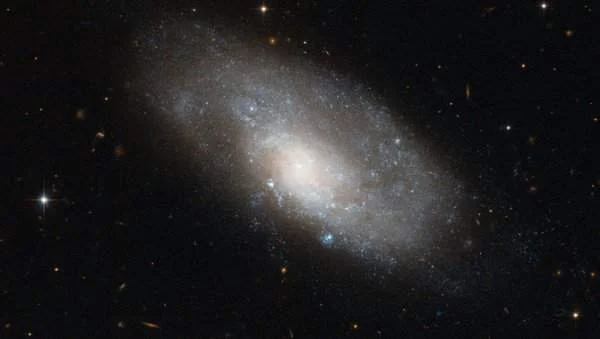NASA’s Hubble Space Telescope has captured an image of NGC 4980, a spiral galaxy in the southern constellation of Hydra.
Interestingly enough, the shape of NGC 4980 appears slightly deformed – which often indicates recent tidal interactions with another galaxy. However, this doesn’t seem to be a particularly plausible explanation for NGC 4980, as there are are no other galaxies in its immediate vicinity.

The image above was produced as part of a research program studying the nature of galactic bulges, the bright, dense, elliptical centers of galaxies.
Classical bulges are relatively disordered, with stars orbiting the galactic center in all directions.
In contrast, in galaxies with so-called pseudobulges – or disc-type bulges – the movement of the spiral arms is preserved right to the center of the galaxy.
Although the spiral structure is relatively subtle in this image, scientists have demonstrated that NGC 4980 maintains a disc-type bulge, with its rotating spiral structure extending to the very center of the galaxy.
A galaxies’ bright arms are the location of new star formation in spiral galaxies, and NGC 4980 is no exception. The galaxy’s arms are traced out by blue pockets of extremely hot newborn stars are visible across much of its disc. This sets it apart from the reddish galaxies visible in the background, which are distant elliptical galaxies made up of much older, and hence redder, stars.






